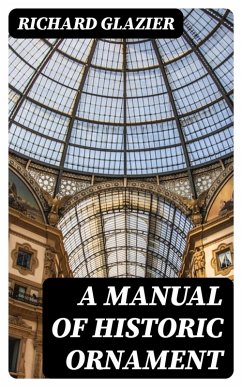In "A Manual of Historic Ornament," Richard Glazier meticulously catalogues the evolution of ornamental design throughout various historical periods, presenting a rich tapestry of artistic styles from classical antiquity to the contemporary era. The book's literary style is characterized by a clear, didactic approach that seamlessly integrates visual analysis with a comprehensive narrative. Glazier employs an array of illustrations, offering readers not only a scholarly explanation of ornamentation but also a visual feast that highlights the intricacies of design and the cultural contexts that birthed them. This work stands as a crucial reference point for understanding the aesthetic principles that have influenced architecture and design over centuries. Richard Glazier, a noted architect and design historian, draws from a wealth of experience in his field, which informs his authoritative perspective in this manual. His passion for historic ornamentation and architecture is evident throughout the text, as he synthesizes extensive research into a coherent guide that addresses both the practicalities of restoration and the theoretical underpinnings of design philosophies. Glazier's deep appreciation for craftsmanship speaks to his own background, making this work not just an academic resource but a personal exploration. I highly recommend "A Manual of Historic Ornament" to students, practitioners, and enthusiasts of design and architecture seeking a profound understanding of the interplay between history and ornamentation. Glazier's scholarly insights, paired with stunning visuals, provide a valuable resource that is both instructive and inspiring, making it an essential addition to any library dedicated to the decorative arts.
Dieser Download kann aus rechtlichen Gründen nur mit Rechnungsadresse in A, B, BG, CY, CZ, D, DK, EW, E, FIN, F, GR, H, IRL, I, LT, L, LR, M, NL, PL, P, R, S, SLO, SK ausgeliefert werden.









